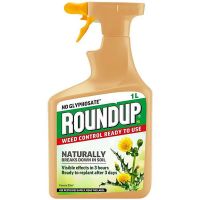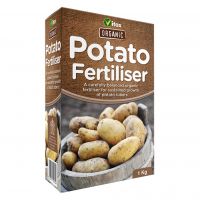Hip, Hip, Hooray, Summer Is On Its Way: Guide to Summer Gardening

Greetings, fellow garden enthusiasts! As we bid farewell to spring and (hopefully) welcome the warmth of summer, it's time to roll up our sleeves and prepare our gardens for the sunny days ahead. As the manager of Pearsons of Duns Garden Centre, I love sharing top tips to ensure your garden thrives throughout the season, so let's get started on summer.
Evaluate Your Garden's Needs:
Let's kick-off our summer garden prep by thoroughly assessing our beloved green spaces. Take a stroll through your garden, keenly observing its current state. Are there any lingering remnants of winter, such as fallen leaves or dead foliage? Take note of any areas in need of attention, whether it's soil quality, drainage issues, or overgrown plants. We have a range of lovely notebooks available in the garden centre shop, which is perfect for the task; but in all seriousness, this initial assessment will serve as our roadmap for the tasks ahead.
Clearing Debris: A Fresh Start
Now that we've taken stock of our garden's needs, it's time to roll up our sleeves and get to work. Begin by clearing away any debris – fallen leaves or dead branches that may have accumulated. Not only does this tidying up improve the aesthetics of your garden, but it also prevents pests and diseases from gaining a foothold. Prune away any dead growth and neaten up the borders to give your garden a fresh, clean canvas to work with. It's hard but very therapeutic work.
Nurture Your Soil:
Yes, soil enrichment was included in my Spring blog, and it's here again because I can't stress how important it is! Healthy soil is the secret ingredient behind a thriving garden. Test the pH and nutrient levels of your soil to identify any deficiencies. Then, bolster its health with a generous dose of organic matter like compost or well-rotted manure. Loosen up compacted soil to encourage robust root growth and better water absorption.
Planting Plan: Choosing Your Garden Stars
Now comes the fun part – selecting the stars of your summer garden! Consider the layout of your garden, considering factors such as sunlight exposure, soil type, and available space. Choose plants that thrive in our local climate and soil conditions, whether it's vibrant perennials, colourful annuals, or a bountiful vegetable patch. Be sure to stagger your plantings to ensure a continuous display of blooms and foliage throughout the season. Look out for our 'Plant of the Week' on our social media - whether it's a familiar favourite or something you've not considered planting before, where weekly updates and offers are a great way to play with your planting.
Mulching Magic: A Gardener's Secret Weapon
This is another recurring entry, but mulching is a gardener's best friend, offering a multitude of benefits for your garden beds. Not only does it conserve soil moisture and suppress weeds, but it also regulates soil temperature and promotes soil health. Apply a generous layer of organic mulch, such as wood chips, straw, or shredded leaves, around your plants, leaving a few inches of space around the stems. Your garden will thank you with healthier, happier plants and reduced maintenance tasks.
Watering Wisdom: Keeping Your Garden Hydrated
Summers in the South of Scotland invariably include some rain, but this doesn't mean we don't have to consider hydration too. Proper watering is essential for the health and vitality of your garden, especially during the warmer summer months. Consider installing a drip irrigation system or soaker hoses to deliver water directly to the roots, minimizing water waste and evaporation. Alternatively, establish a watering schedule based on your garden's needs, ensuring consistent moisture without overwatering. Remember to water deeply and infrequently to encourage deep-root growth and drought tolerance.
Pest and Disease Management: Staying Vigilant
We're all aware of the need to preserve our local natural habitat, and there are new, innovative, and sustainable ways to manage pests and diseases that are new to the market all the time. Watch out for common garden pests such as aphids, slugs, and snails, as well as signs of fungal diseases like powdery mildew and black spot. Implement preventive measures such as companion planting, crop rotation, and proper sanitation to deter pests and minimize disease spread. Consider using organic pest controls to maintain a healthy balance in your garden ecosystem, avoiding harsh chemicals that can harm beneficial insects and wildlife.
Creating Outdoor Sanctuaries: A Place to Unwind
As our friends in the Builders' Merchants noted last month in their blog, outdoor space is now very much useable for leisure time, and we all want to make the most of what we have available. So, beyond the practical aspects of garden preparation, remember to create inviting outdoor spaces to relax and rejuvenate. Add comfortable seating, decorative accents, and ambient lighting to enhance the ambience of your garden. Whether it's a cosy corner for reading, a tranquil meditation space, or a lively dining area for alfresco meals, make your garden a sanctuary for relaxation and enjoyment.
National Children's Gardening Week: Creating a Mini Garden
We love to see younger gardeners get to work too, and this year we are celebrating National Children's Gardening Week by encouraging kids to get involved in a fun and fulfilling gardening project.
To begin, gather a container such as a plant pot, hanging basket, tinfoil tray, old washing-up bowl, big teacup, or bucket. You'll also need compost, garden soil, and natural materials like twigs, leaves, stones, flowers, moss, and tiny plants. Optional items include small pieces of fabric, string, glue, and wildflower seeds.
Fill your chosen container with compost or soil to create a foundation. Construct pathways and any solid structures first, followed by smaller decorations. Save any delicate items for last to avoid them getting buried under soil. Incorporate a standout feature or "star of the show" in your garden. This could be a plant, or a crafted item made from natural materials. For example, you can create a colourful washing line by tying a string between two twigs and attaching small pieces of fabric.
Once your mini garden is complete, water it gently. If it will be kept outdoors, place it in a sheltered spot to protect it from harsh weather. Regularly tend to your garden, removing any dead items and giving it a bit of water to keep it thriving.
Research shows a strong link between happiness and a connection to nature, and for children, gardening can instill a sense of pride and empowerment. Kids can get involved in many ways, and creating a mini garden is a great start.
For more fun gardening activities for the little ones, pop by between the 25th of May and the 2nd of June, where our team are hosting a fun treasure hunt across the centre to help inspire the next generation of green-thumbed gardeners!
That's it from me this quarter other than to say happy gardening and remember to share your photos or tag us in your gardening social media posts - we love to see your work.
Did you enjoy this blog? Yes! Why not sign up to our newsletter to be the first to know when our next blog from the garden centre team is live.













